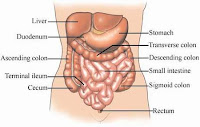Chicken-pox
The lesions come in three to five successive crops over a period of two to seven days. They are itchy. Most arc on the skin of the trunk but there may be ulcerating vesicles in the mouth. Differential diagnosis is generalized herpes infection, vaccinia, impetigo, drug eruptions, 'hand, foot and mouth' disease, papular urticaria and dermatitis herpetiformis.
Normally no local treatment is required, but itching can be relieved somewhat by a calamine lotion.
All scars following chicken-pox (and smallpox) arc due to scratching with resultant infection.
The lesions come in three to five successive crops over a period of two to seven days. They are itchy. Most arc on the skin of the trunk but there may be ulcerating vesicles in the mouth. Differential diagnosis is generalized herpes infection, vaccinia, impetigo, drug eruptions, 'hand, foot and mouth' disease, papular urticaria and dermatitis herpetiformis.
Normally no local treatment is required, but itching can be relieved somewhat by a calamine lotion.
All scars following chicken-pox (and smallpox) arc due to scratching with resultant infection.
Molluscum contagiosum
This is a viral infection. There arc small papules which are umbjlicaied and pearly colour in appearance. They tend to be grouped. Treatment is to pierce the lesion with a pointed stick dipped in 1% phenol. If there are large numbers the dermatologist should see the child.
This is a viral infection. There arc small papules which are umbjlicaied and pearly colour in appearance. They tend to be grouped. Treatment is to pierce the lesion with a pointed stick dipped in 1% phenol. If there are large numbers the dermatologist should see the child.
Bullous eruptions
These arc usually due to scalds, urticaria, impetigo, pemphigus and drugs, particularly iodides, penicillin, sulphonamidcs, salicylates, nitrazepam, thiazide diuretics and tricyclic antidepressants. When the skin is peeling off over large areas leaving a 'scalded' appearance, it is usually a toxic epidermal necrolysis. This may be infective in origin (staphylococcal) but is often due to drugs such as sulphonamidc, phenytoin or barbiturates. Paraffin can also give extensive epidermal necrolysis.
These arc usually due to scalds, urticaria, impetigo, pemphigus and drugs, particularly iodides, penicillin, sulphonamidcs, salicylates, nitrazepam, thiazide diuretics and tricyclic antidepressants. When the skin is peeling off over large areas leaving a 'scalded' appearance, it is usually a toxic epidermal necrolysis. This may be infective in origin (staphylococcal) but is often due to drugs such as sulphonamidc, phenytoin or barbiturates. Paraffin can also give extensive epidermal necrolysis.
Exfoliative dermatitis
This may be caused by phenytoin, barbiturates, carbamez-apine, sulphonamidcs, opiates, gold salts, chloroquine, penicillin, phenothiazincs and streptococcal infection.
This may be caused by phenytoin, barbiturates, carbamez-apine, sulphonamidcs, opiates, gold salts, chloroquine, penicillin, phenothiazincs and streptococcal infection.







